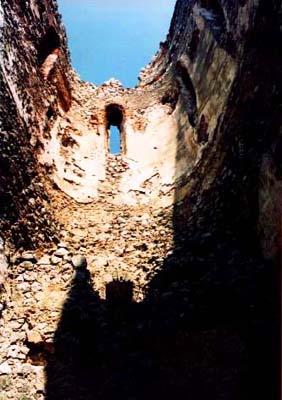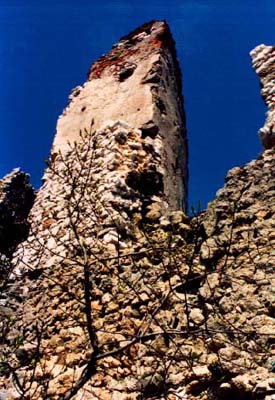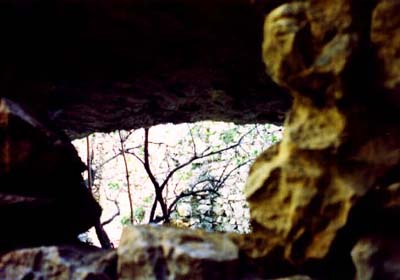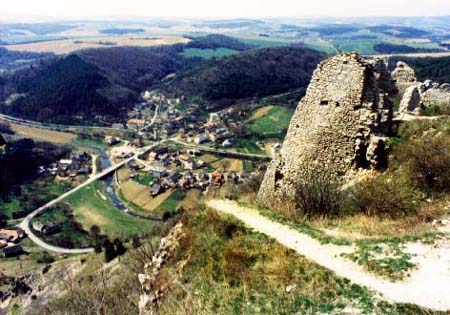Erzsébet
an opera in three acts
Music by Dennis Báthory-Kitsz
Libretto by Andrei Codrescu
Design by Pavel Kraus
The Characters

The past.
- Countess Elizabeth Bathory, mezzo-soprano
- Franz Nadasdy, her husband, tenor
- Darvulia, her maid, contralto
- Theresa, her maid, alto
- Andrei de Kereshtur, a friend, tenor
- Hebler, the preacher, countertenor
- Ponikenuz, the pastor, countertenor
- Matthias, the king, bass
- Melotus, a storyteller, baritone
- Kepler, a scientist, tenor
- Ficzko, a lover, tenor
- Silvesti, a monk, tenor
- A thief, a rabbi, a harlequin, and other minor characters
The present
- Drake Bathory-Kereshtur, émigré from Hungary, tenor
- Lilly Hangress, the professor, mezzo-soprano
- Klaus Megyery, failed poltician, baritone
- Mari, a friend, soprano
- Eva, an old friend, alto
- Theresa, Eva's daughter, alto
The Orchestration
- Quintet of strings (violin, two violas, violoncello, contrabass).
- Quintet of saxophones (soprano, alto, tenor, baritone, bass).
- Cimbalom (or prepared piano).
- Percussion (played by two performers).
Act I
Scene 1. Erzsébet Báthory and a hint of Drake Bathory-Keresztur
- The Mirrors (1). This is a visual and sonic pinnacle, and a formidable moment after/as the 'overture'.
- Ilona (3). In my original ideas, Ilona formed my Act II pivot because of her musical implications and possibilities.
- With the Animals (24). A fantasy scene, good 'grand opera' stuff, and richly anti-disneyesque.
- *Mari and The Blood Drop (48). Our first glimpse of Drake, without knowing who/why.
- Buggering and Death
- The Buggering (65). Essential character-building.
- Death of the Gypsy (67). Entwined as one scene with The Buggering.

Scene 2. Erzsébet Báthory framed by Drake Bathory-Keresztur
- *Back in Budapest (74). Nicely jarring, dreary modernism.
- The Two Conversations (82). Where Erzsébet Báthory can hear polyphony.
- Andrei and The Blood Drop (91). Darkness of Kereshtur licking the tiny drop.
- Torture and Sex
- Torture of the Thief (98). Another scene paired with the following.
- The Harlequin (100).
- The Jew and the Lepers (104). The significance of Jews in the story might not be enough to drive this scene.
- *The Meeting with Megyery (112). The end of the frame of gray modernity.
Scene 3. Drake Bathory-Keresztur
- *Father's Grave (118). The first of the institutional formalities.
- *Teresa and the Dread of Age (122). Bringing her place forward early, even on stage.
- *Institutions
- *The Library (130). This scene and the following are tied together.
- *The Thurzo Museum (137). The conclusion of this scene is wonderful.
Scene 4. Drake Bathory-Keresztur
- *Eva (140). The scene complete, brief.
Scene 5. Erzsébet Báthory
- Sarvar and Melotus' Tale (154). Scene setting transition to fantasy, and the arch-like scenes that follow.
- Age.
- Teresa and the Anticipation of Age (160).
- Darvulia and the Moment of Age (174).
- A Bite (178). Underplayed and personal as the story is sucked into Erzsébet Báthory for the rest of the opera.
Act II
Scene 1. Drake Bathory-Keresztur
- *History.
- *Lilly and the Underground River (180). An aria if ever one was to be heard!
- *Teresa and the Letters (194). (Interlude)
- *The King of Hungary. A brilliant but bleak crowd scene, all noises and smoke (204).

Scene 2. Erzsébet Báthory
- The World and Elizabeth. Each of these is cameo-like.
- Franz and Elizabeth (211).
- Klara and Elizabeth (218).
- Ponikenuz and Elizabeth (226).
- Matthias and Elizabeth (232).
- Theresa and Elizabeth (236).
- A Wedding.
- Franz and Elizabeth (244). Like scene 20, a brilliant wedding with crowd and noises and smoke.
- Droit du Seigneur (248). (Interlude)
- Lovers' Night (252). (I love Ibis. What to do?)
- The Day of Nakedness (258). The last possible lightness darkens with this scene's conclusion.
Scene 3. Erzsébet Báthory/Drake Bathory-Keresztur
- *Kereshtur. Enter surreal visual content, where the drive is musical.
- *Kereshtur: Castle and Day Snow (268). (The Hand left out because of stage logistics.)
- *Kereshtur: Old Man and the Keys (276).
- Kepler (296). (Interlude)
- Night Snow, Candle, and Crucifix (302). The personalness is exquisite.
- The Mirror (304). The shortest scene, but one by itself.
Act III
Scene 1. Erzsébet Báthory
- Liquids and Passions Flow. Three short scenes that run onto the stage; the drama takes on a new character.
- Monkey (306).
- Ficzko (307).
- Selena (308).
Scene 2. Erzsébet Báthory+Drake Bathory-Keresztur
- *Lockenhaus (328). The noisy scene, then the moment with Lilly and Teresa, the room (diptych).
- Lockenhaus (338). A wonderful film transition; stage transition may demand imaginative solutions.
- The Black Death. The 'important' deaths begin, in order.
- Death of Teresa (346).
- Interlude: Mare's Milk and Sickness of Anna (348).
- Death of Silvestri (354).
- Death of Anna (355).
- Death of Gabor and Ramos (366)
- At Table (382) (Interlude). The episode with Franz and the birth of Anna are implied later.

Scene 3. Drake Bathory-Keresztur/Erzsébet Báthory
- *Stories. These are arias that begin alone and intertwine into the next scene.
- *Drake (396).
- *Imre (400).
- *Lilly/Teresa (410).
- *The Circle (416). Reminiscent of other circles, especially the Diaghilev Rite.
Scene 4. Erzsébet Báthory
- Ilona (427). (Extended instead of the Dorika scene.)
Scene 5. All
- The Trial (434). Rising noise and intertwining of lines.
- The Death (446). Set up like The Mirror, Act II, Scene 3, final tableau.
- [*The King of Hungary]. How Drake Bathory-Keresztur backs us out.
Notes on the translation from novel to opera:
Scenes that generally work for me include strong visual elements and either action or mystery. The trick in translating this book into an opera (as opposed to a stage work or a film) is the essential unnecessariness of opera. I think it can only matter if it is driven forward in plot-ways when action can be followed, no matter how complex the mystery.

The courtroom device must be re-imagined in an operatic context. It is difficult to bring in the contemporary thread of the story. Perhaps Drake Bathory-Kereshtur is here only a shadow figure far to the side of the stage, or even in the audience. Actually, outside the novel, the courtroom deviceis difficult, unless it can be dramatically conjoined with Elizabeth's trial.
In fact, the modern/ancient can be a stage diptych, maybe. In some ways, I'm still stuck in my old Erzsébet, which had stage divisions for other reasons. My own working concept was originally quite a different countess.
I am wondering about the idea of an opera itself, even a modernist or avant-garde or 'performance art' opera.
The scenes are outlined in the order presented in the book (modern are scenes marked *), with a kind of dramatic dividing into Acts and groups of scenes. Page references are to the Dell paperback.
Western historical context is absent, though 138ff is revealing from the modern story. "High European culture was in no way an impediment to ... torture and butchery."
How does one work in images of drab Communist Budapest and/or 1956? Is this important?





